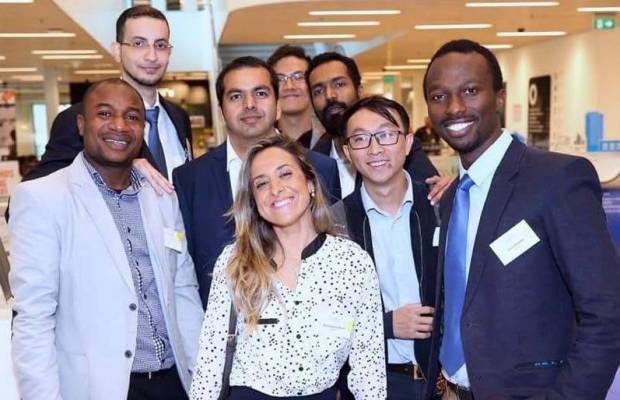Multicultural leadership – five ways to learn by doing
How can we prepare our students and the future workforce to operate and lead confidently in a multicultural world? Dr. Stephanie Jones*, Associate Professor of Organizational Behavior at MSM, suggests FIVE ways…
People learn for themselves more than being taught. We get the message through eureka moments when everything falls into place. It starts with being challenged to think, argue, unlearn as well as learn, gain first-hand evidence of cultural differences, and to realize for ourselves that the way we operate is no longer working, or at least not where we are now.
1. THINKING FOR YOURSELF. Education systems in many parts of the world do not encourage this. And
Googling everything can make it worse, by doing your thinking for you.
I was teaching an MBA leadership module in Cairo during the Egyptian revolution. What a fantastic opportunity to discuss leadership! I asked the students (bright, young, wealthy, ambitious professionals) what kind of leader do we need for the new, post-revolution Egypt? Which leadership competencies, skills, characteristics are now relevant given hugely changing times? They looked at me. They got out their phones, tablets, laptops. Google. What kind of leader do we need for the new, post-revolution Egypt? Switch them off. Put them away. What do you THINK? You know better than anyone!
2. DON’T BELIEVE EVERYTHING YOU READ. Many young people are brought up to assume that
anything printed in a book (or even posted on the internet) must be true.
I certainly believed all books I read completely, and the first task I was given as an 18-year-old undergraduate student at the London School of Economics was to read a history book – about King Arthur and the Knights of the Round Table. Great stuff and very exciting! But it’s a myth. And written by an archaeologist trying to get funding for an excavation. My bubble burst…
3. UNLEARNING. Where are people coming from? What do they know and believe already?
In teaching multicultural leadership skills we discuss stereotyping. Many are widely assumed to be “correct”. Ethnocentricity is “OK”. How dangerous is this? A stereotypes exercise in class – for some it’s funny; for others it’s shocking; for many confusing – is this a test in class? I’m supposed to get at least 7/10 or I fail? I got 10/10 so I’m really smart! In the reflective journal students write afterwards, most get the point and feel slightly ashamed that they are so easily-led, and resolve to see people on their own individual merits and not make assumptions.
4. SEE IT FOR YOURSELF. How do different people react to ways they feel inside? Do they show it? How do
you know? How can you lead people if you don’t know how they think and feel?
One of the most important aspects of understanding cultural differences is the way we show (or don’t show) emotions. Certain nationalities have a tendency to be quite explicit about demonstrating how they feel, and it’s OK to show this, at home and in the workplace. For other cultures, this is a no-no. Keep it to yourself. British stiff upper lip. Asian inscrutability. We have an exercise acting out the six universal emotions in class – happiness, sadness, anger, disgust, fear, surprise. The audience has to guess which emotions are being demonstrated. Some cultures just can’t do it. They can’t act it out. They even cover their faces with their hands. The more explicit participants realize that managing these people is going to be a whole new ball game. How can I work with them if I don’t know what’s going on inside?
5. EXPERIENCE IT FOR YOURSELF. We all operate in different ways, often out of habit and because it
worked before. But it might not continue working in a different context.
It’s OK to be vague and late about appointments and to make up your mind in the here and now about whether or not you want to do something – for some of us. But not everyone. The first week of the new MBA class includes outings to downtown Maastricht and local companies, and the European Commission in nearby Brussels. You need to be at the bus by 0900 sharp. Really? Maybe it will still be there after ten minutes. But it isn’t. Oh. They really mean it…
The experience of studying for an MBA should change the life of the participants and prepare them for more practical experiences. Many MBA graduates are looking for status, building a network and making more money. How is the MBA experience going to achieve this? Recent research by the FT** suggests that prestigious, professional multinational companies being targeted by MBAs for jobs are looking for people with “the top five skills”.
They need to work in a team, with a variety of people, solve complex problems, build and sustain a professional network, and manage their priorities. There is one common theme in all of these skills – and that’s the need to develop cultural awareness and competencies as an essential part of leadership effectiveness. Every team people work in now is going to be culturally diverse. The different ways of thinking of the members of such a team helps significantly in solving complex (as opposed to routine) problems. Every professional network is, nowadays, inevitably multicultural. And different cultures give different priorities to different values – an issue every manager and leader needs to understand to get things done.
We have found at Maastricht School of Management that cultural awareness is learned in three ways: in the classroom; from living in another country; and from working in a multicultural environment. This enables the process of thinking, arguing, unlearning, gaining first-hand evidence of cultural differences, and realizing the need for different ways of operating – requisites for future multicultural workplace leadership.
*See Gosling, J., Jones, S., Sutherland, I. (2012) Key Concepts in Leadership. London: Sage
**Nilsson, P. (2018) What Top Employers Want from MBA Graduates. London: Financial Times, September 3



